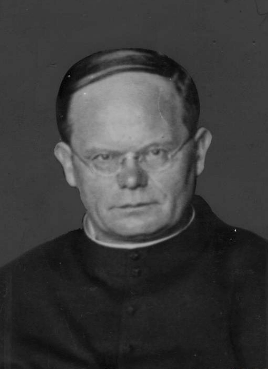
Merkuriusz Polski Ordynaryjny was the first Polish newspaper, published from 1661, first in Kraków, then in Warsaw.

Władysław Tatarkiewicz was a Polish philosopher, historian of philosophy, historian of art, esthetician, and ethicist.

The Warsaw Corps of Cadets was the first state school in the Polish–Lithuanian Commonwealth.

Aleksander Świętochowski was a Polish writer, educator, and philosopher of the Positivist period that followed the January 1863 Uprising.

Maksymilian Siła-Nowicki was a Polish zoology professor and pioneer conservationist in Austrian Poland. His major studies were on the beetles and lepidoptera of eastern Galicia. Later in life, he was involved in the conservation of the fauna of the Tatra Mountains.

Johann Christian Schuch was a Dresden-born garden designer and architect, active in Poland.

Wacław Szymanowski was a Polish sculptor and painter. He is best known for his statue of composer Frédéric Chopin in Warsaw's Royal Baths Park.

Adam Mahrburg was a Polish philosopher—the outstanding philosophical mind of Poland's Positivist period.
Gawęda is a genre of Polish oral folklore, as well as an epic literary genre of works stylized as an oral tale, characterized by freedom of composition, rich in digressions, and written in language close to colloquial language. The word literally means "oral tale".

Sebastian Petrycy of Pilzno, in Latin known as Sebastianus Petricius, was a Polish philosopher and physician. He lectured and published notable works in the field of medicine but is principally remembered for his masterly Polish translations of philosophical works by Aristotle and for his commentaries to them. Petrycy made major contributions to nascent Polish philosophical terminology.

Józef Kalasanty Szaniawski was a Polish philosopher and politician.
Feliks Jaroński was a Polish Catholic priest and philosopher.

Piotr Chmielowski was a Polish philosopher, literary historian and critic.
Władysław Weryho (1868–1916) was a Polish social activist, popularizer of learning, especially of philosophy and psychology, and organizer of learned life in partitioned Poland.

Konstanty Michalski (1879–1947) was a Polish Catholic theologian and philosopher.

Władysław Mieczysław Kozłowski was a Polish philosopher.

Franciszek Salezy Krupiński was a Polish philosopher.

Chrystian Piotr Aigner was a Polish architect and theoretician of architecture.

The looting of Polish cultural artifacts and industrial infrastructure during World War II was carried out by Nazi Germany and the Soviet Union simultaneously after the invasion of Poland of 1939. A significant portion of Poland's cultural heritage, estimated at half a million art objects, was plundered by the occupying powers. Catalogued pieces are still occasionally recovered elsewhere in the world and returned to Poland.

Biuro Odszkodowań Wojennych BOW - institution established in 1945 by the Presidium of the Council of Ministers in Warsaw to assess the war losses suffered by Poland during the Second World War in 1939-1945. The office dealt with determining and estimating the war losses suffered by the Polish state, as well as private individuals in the field of material and cultural goods, coordinating work related to the compensation and recovery.






















